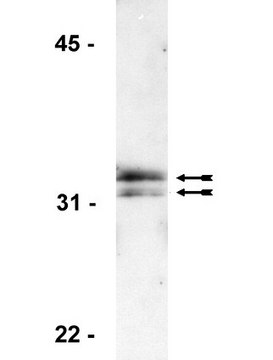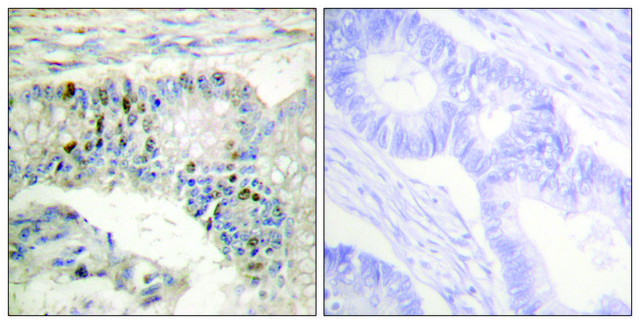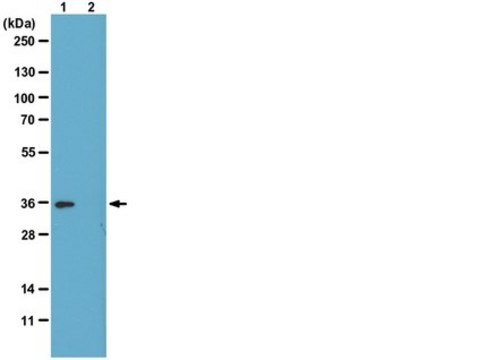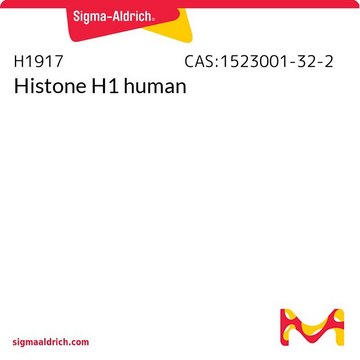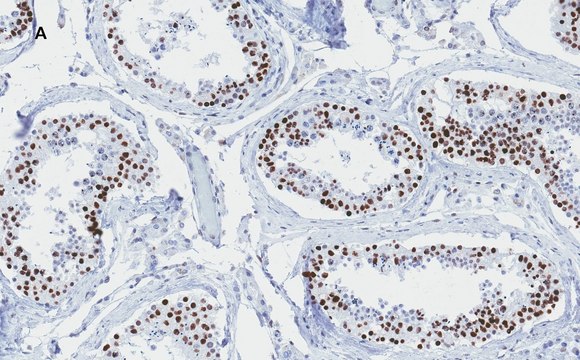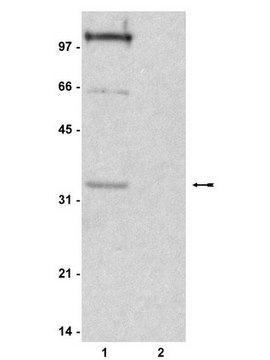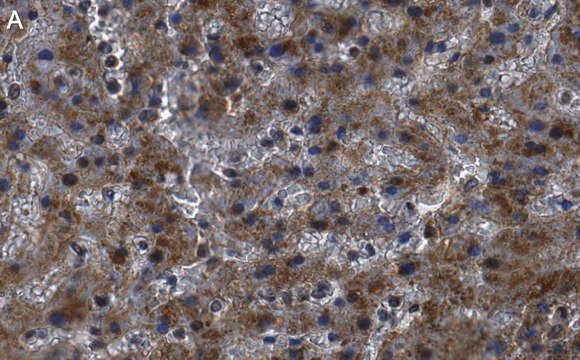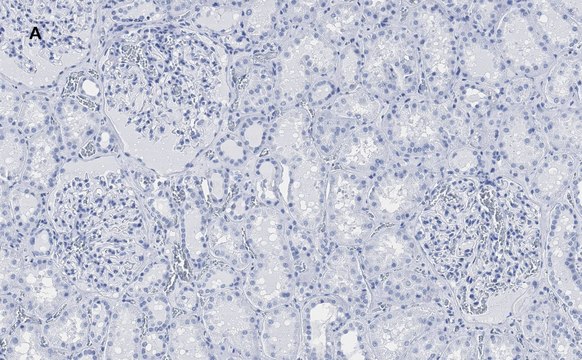一般描述
We are committed to bringing you greener alternative products, which adhere to one or more of The 12 Principles of Green Chemistry.This antibody is Preservative-free, produced without the harm or sacrifice of animals and exceptionally stable to allow for ambient shipping and storage if needed and thus aligns with "Waste Prevention", "Designing Safer Chemicals" and "Design for Energy Efficiency".
Click here for more information.
ZooMAb® antibodies represent an entirely new generation of recombinant monoclonal antibodies.Each ZooMAb® antibody is manufactured using our proprietary recombinant expression system, purified to homogeneity, and precisely dispensed to produce robust and highly reproducible lot-to-lot consistency. Only top-performing clones are released for use by researchers. Each antibody is validated for high specificity and affinity across multiple applications, including its most commonly used application. ZooMAb® antibodies are reliably available and ready to ship when you need them.
特异性
Clone 2D17 is a ZooMAb® Rabbit recombinant monoclonal antibody that specifically detects Histone H1.0. It targets an epitope within 18 amino acids from the C-terminal region.
免疫原
KLH-conjugated linear peptide corresponding to 18 amino acids from the C-terminal region of human Histone H1.0
应用
Quality Control Testing
Evaluated by Western Blotting in NIH3T3 cell lysate.
Western Blotting Analysis: A 1:1,000 dilution of this antibody detected Histone H1 in NIH3T3 cell lysate.
Tested applications
Western Blotting Analysis: A 1:1,000 dilution from a representative lot detected Histone H1 in A549 cell lysates.
Immunocytochemistry Analysis: A 1:100 dilution from a representative lot detected Histone H1 in A549 cell line.
Affinity Binding Assay: A representative lot of this antibody bound Histone H1F0 peptide with a KD of 3.3 x 10-9 in an affinity binding assay.
Immunohistochemistry (Paraffin) Analysis: A 1:100 dilution from a representative lot detected Histone H1 in human kidney tissue sections.
Note: Actual optimal working dilutions must be determined by end user as specimens, and experimental conditions may vary with the end user
Evaluated by Western Blotting in NIH3T3 cell lysate.
Western Blotting Analysis: A 1:1,000 dilution of this antibody detected Histone H1 in NIH3T3 cell lysate.
目标描述
Histone H1.0 (UniProt: P07305; also known as Histone H1′, Histone H1(0)) is encoded by the H1-0 (also known as H1F0, H1FV) gene (Gene ID: 3005) in Human. Histones are highly conserved proteins that serve as the structural scaffold for the organization of nuclear DNA into chromatin. They have been classified under five major classes. The core histones H2A, H2B, H3, and H4 constitute the protein components of nucleosome core particles and histone H1 is a linker histone that plays a role in chromatin folding. Histone modifications regulate DNA transcription, repair, recombination, and replication. Eleven different variants of H1 have been described in human. Histones H1 are necessary for the condensation of nucleosome chains into higher-order structures. They are found in cells that are in terminal stages of differentiation or that have low rates of cell division. They play a dominant role in establishing the compaction state of an array of nucleosomes as well as influencing the conformation. Histone H1 has three domains: a central globular domain that binds near the entry/exit site of linker DNA on the nucleosome, and extended N- and C-terminus. The central globular domain is highly conserved among all H1 subtypes and contains a winged-helix motif . The C-terminus is particularly rich in lysine and arginine and has a strong propensity to bind DNA. Depletion of histone H1 can cause dramatic changes in chromatin structure, global nucleosome spacing, and reduced chromatin compaction. Two isoforms of Histone H1 have been described that are produced by alternative splicing. This ZooMAbZooMAb® recombinant monoclonal antibody, generated by our propriety technology, offers significantly enhanced specificity, affinity, reproducibility, and stability over conventional monoclonals. (Ref.: (Ref.: Hergeth, SP., and Schneider, R. (2015). EMBO Rep. 16(11); 1439-1453).
外形
Purified recombinant rabbit monoclonal antibody IgG, lyophilized in PBS with 5% Trehalose, normal appearance a coarse or translucent resin. The PBS/trehalose components in the ZooMAb formulation can have the appearance of a semi-solid (bead like gel) after lyophilization. This is a normal phenomenon. Please follow the recommended reconstitution procedure in the data sheet to dissolve the semi-solid, bead-like, gel-appearing material. The resulting antibody solution is completely stable and functional as proven by full functional testing. Contains no biocide or preservatives, such as azide, or any animal by-products. Larger pack sizes provided as multiples of 25 μL.
重悬
30 μg/mL after reconstitution at 25 μL per vial. Please refer to guidance on suggested starting dilutions and/or titers per application and sample type.
储存及稳定性
Recommend storage of lyophilized product at 2-8°C; Before reconstitution, micro-centrifuge vials briefly to spin down material to bottom of the vial; Reconstitute each vial by adding 25 μL of filtered lab grade water or PBS; Reconstituted antibodies can be stored at 2-8°C, or -20°C for long term storage. Avoid repeated freeze-thaws.
法律信息
ZooMAb is a registered trademark of Merck KGaA, Darmstadt, Germany
免责声明
Unless otherwise stated in our catalog or other company documentation accompanying the product(s), our products are intended for research use only and are not to be used for any other purpose, which includes but is not limited to, unauthorized commercial uses, in vitro diagnostic uses, ex vivo or in vivo therapeutic uses or any type of consumption or application to humans or animals.

